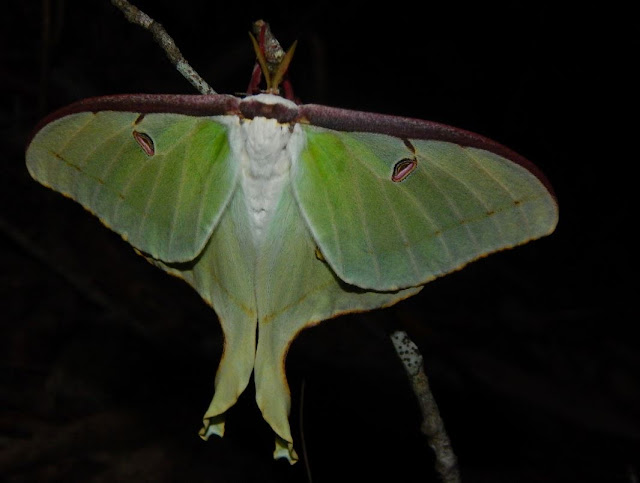National Moth Week: Luna Moth (Actias luna)
 |
| Photo of a Luna moth (Actias luna) by iNaturalist user iamashark in Aucilla WMA in Jefferson County on July 27, 2018 CC BY-NC 4.0 |
Do you remember the first time you saw a Luna moth? For many of us, it was an exciting childhood moment on a warm, humid summer night. With a wingspan up to 4.5 inches, this large, elegant green moth is a sight to behold. Named after the moon, the Luna moth is found in the eastern half of the U.S. as well as in southern Canada — nowhere else on the planet.
The moths themselves do not eat, so caterpillar host plants are crucial to the survival of the species. Caterpillars feed on a variety of trees, including these native Florida trees: persimmon, sweet gum, hickories, walnuts, and sumacs. Not surprisingly, these moths are typically found in deciduous hardwood forests.
While not a plant pollinator, this member of the North American silk moths (Saturnidae) provides service to ecosystems as food for bats, owls and other nocturnal predators. And its elegant showiness makes the moth a great representative for all moths—an emblem of these important and necessary creatures in the animal kingdom.
Seen a Luna moth lately? Share your photos through iNaturalist’s National Moth Week citizen science project. For more information, check out National Moth Week.
by Laura Bennett-Kimble of Passionflower Chapter



Comments